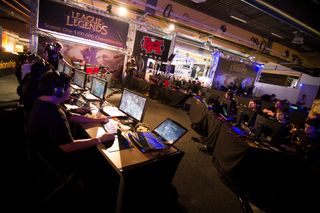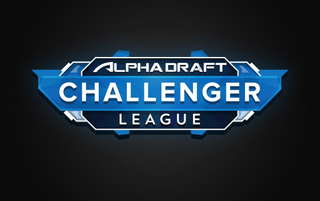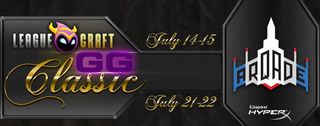How League of Legends can learn from other esports scenes

Speaking as a writer that covers a scene easily considered one of the most well-funded and supported in the entire esports ecology... I'm kind of jealous of everybody else.
It's not as if the League of Legends scene isn't vibrant and healthy—the increased challenger scene support across the board (with rumors of an expanded tournament even here in Taiwan) guarantees a baseline of fresh talent even as the current generation of pro players retire or burn out. The collegiate scene just had a major Riot-backed and casted face-off a while ago as well. So Riot's plans to extend the health of the scene for years to come seems like it's ticking away like a well-oiled machine. Though it'll be at least five more years (twice its current lifetime) before we truly know if their investment's paid off, we do know that they've successfully dominated the Korean and Chinese esports scene for a length of time unprecedented by any game but Brood War.
That's not too shabby for a company younger than my baby sister. Yet it's also been a dominance and longevity entirely driven by them as well—a case of strongly top-down design. And that inherently has some limitations and restrictions for how the scene develops.
Lessons from the bootstrap
I've gotten deeply into the Super Smash Bros. Wii U scene lately, and it is definitely Quite The Other Thing. Twitch's recent acquisition of D'Ron Maingrette and Arian Fathieh, major community figures, speaks well of the game's current growth. But while the whole Project M kerfuffle hinted at heavy-handed measures from Nintendo or other involved corporate interests, there is no dispute whatsoever that the Smash scene is one of almost purely grassroots love.
There are drawbacks to the grassroots approach, of course. No careful reputations management and background checks means you get the Alex Strifes floating around, making everybody involved with Apex look bad. There are the rookie tournament organizers running events for the first time, like seemingly with MVG Sandstorm, and drowning under the unexpected seas of complexity as they juggle schedules, setup malfunctions, busted CRT TVs, Challonge messing up the ladder, upon other crises. And all amid a much larger crowd of participants than the 10-20 they originally expected. Not to mention drunk casters, drunk players, and drunk hecklers—even in supposedly dry events!
On the other hand, that's also where the charm is. The informality and lack of barriers between tournament "officials," players, and audience is something you can't replicate even with Riot's almost obsessive approach to public interaction (and which Valve refuses to try at all). There is a very tangible sort of communal ownership—nobody visible in the scene's gotten to where they are without making their bones as just another player getting yelled at for tripping over a console by an overstressed TO.
For all of its lows, the heights of grassroots hype is unmatched and heady. Its best TOs are amazing organizers, especially with a shoestring budget. Its best rivalries are entirely organic—the trashtalk all the better for the peppery fire of offscreen interactions that makes the TSM vs CLG beef look like lean lunchmeat. While the League of Legends era mainstream tournament conductors have done a much better job of humanizing its competitors (the complaints about robotic KeSPA players fallen by the wayside), there is no escaping its nature as an engineered media event.
The biggest gaming news, reviews and hardware deals
Keep up to date with the most important stories and the best deals, as picked by the PC Gamer team.
ZeRo calling out Falcon mains and Smash Wii U players in general was definitely deliberate on his part. But it was no company-manufactured hype. It wasn't a storyline sold to heighten and maintain an audience's interests—it was the champion from Chile throwing the gauntlet down at friends, allies, enemies and rivals alike out of personal interest and investment in the growth of the Smash Wii U scene. Presumably just the same as his friends, allies, enemies and rivals.

There isn't a whole lot of that in League, is there? No money matches in quite a while. Salty suites risk fines if they get too salty (not that we shouldn't, frankly, fine all or most of EUW and EUNE anyhow). Heck, small-scale weeklies have fallen by the wayside of the lumbering, unstoppable LCS machine. Alphadraft's Challenger League's the latest and last of those beasts—but how indie do we really consider a site backed by a Donald Sterling-led investment round worth a posh $5 million?
I'm not really calling for a return to Season 2, when we had DOTA2 and CS:GO's current superabundance problem, with the packed and overlapping schedule of tournaments diluted the importance and hype of all but the biggest. But I do wonder why the grassroots level's so poor, especially in the west. It's not as if has to be—China's got so many tournaments, EDG claimed a cool 22 trophies in the course of a year. And, sure, LPL letting their top teams play is kind of cheating compared to the LCS situation—but where's the interest in running locals and regionals?
Why are we, as a scene, satisfied with just watching TSM play, or Faker dunking mid lane newbs? Why aren't you running a summoner showdown from out of your dorm, having people square off on Howling Abyss 1v1s for the fun of it, and baiting it with a nice little pool of prize money made from the entry fees?
Where it starts

Let me make one last indulgent callback to the days of Season 2, when I was still a wide-eyed esports rookie. Most people know Christopher "MonteCristo" Mykles as OnGameNet's star analyst, breaking down the intricacies of Korean play for the western audience. Some might remember that he was owner and founder of ggChronicle, one of the first independent coverage sites dedicated to League of Legends (Solomid.net predates it, but was obviously answerable to team interests).
Long before League of Legends was an international phenomena, selling out the Staples Center and dominating the esports world, MonteCristo was a paralegal running a community site on the side, paying out of his own pocket to send me up to San Francisco for Curse Invitational coverage (I've since deleted and burned the videos—I have horrible camera presence), and personally hitting the beat to get advertisers to back the ggClassic. We were the first western organization to get the Taipei Assassins to face off against western teams, long before their Season 2 World Championship win. One of the vanishingly few to do regular recaps of the GPL, the first of the game's weekly circuits, and the OnGameNet Champions under Moletrap. My fellow writers, podcasters and vloggers from that era now range from supervising editor at Canada's TheScore (hi Matt), to Riot employees, or to professional casters.
None of us were anything particularly special, except that we chose to be involved instead of staying spectators. We loved the scene, and wanted to be a part of it—not apart from it. And that's what's required to keep the scene healthy in the years to come: not just for its players to be fostered and trained to ever-heightened levels, but for people to want to give them a place to show off their increasing skills, and to hand over a mic for casters to learn to get over stage fright.
We can't rely on Riot for everything. We really shouldn't want to. Eventually, you'll have to ask yourself "what can I do?"
And then, simply, you do it.
Most Popular

